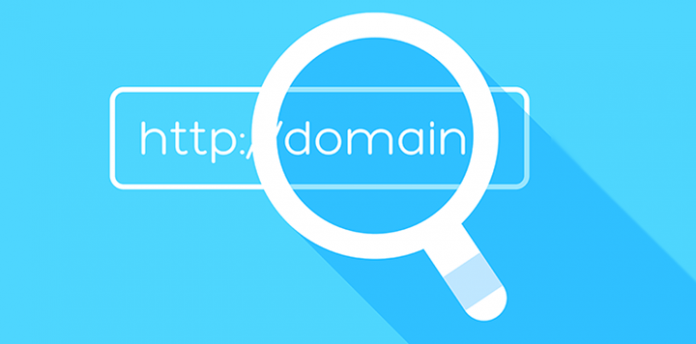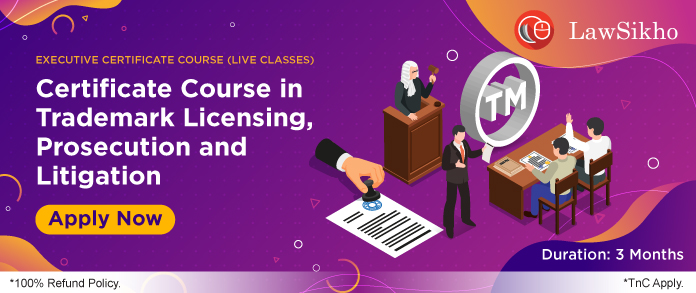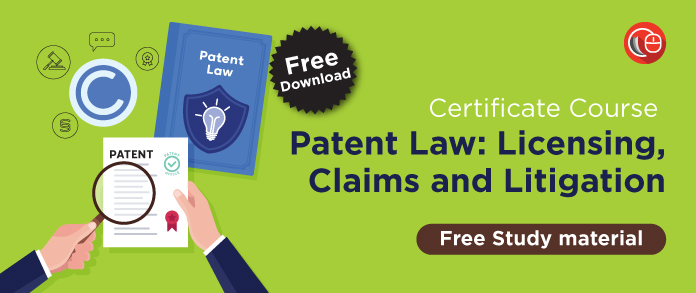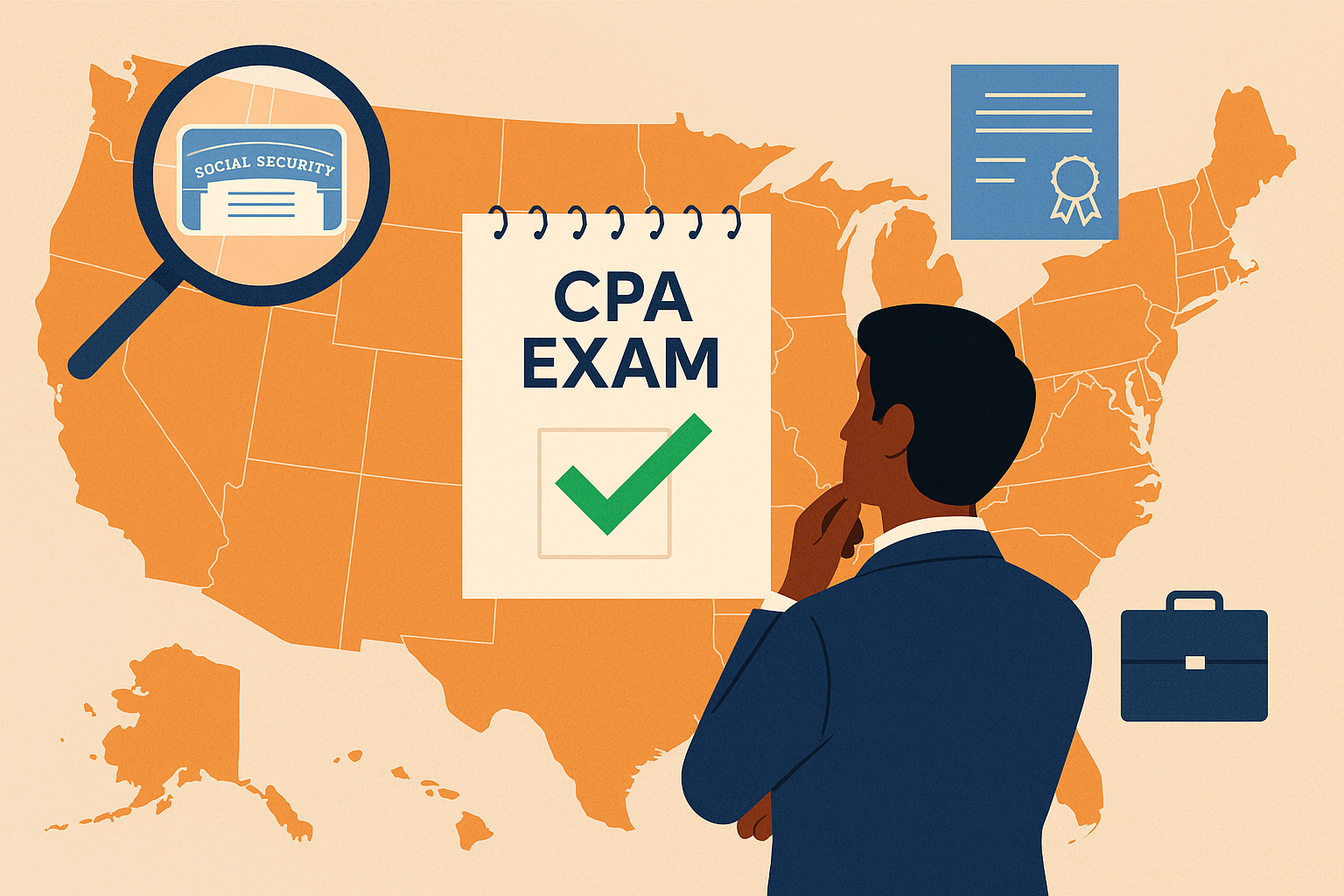This article is written by Utkarsh Singh, a law student of Amity Law School, Noida. This is an exhaustive article that deals with the different types of domain names disputes.
Table of Contents
Introduction
In the 19th century, the internet brought a massive revolution which can be equated with the industrial revolution. The Internet was invented so that people can communicate with each other yet in some years only, it became one of the most important means of communication for government policies, social interaction, and business transactions. It has given a good chance for lakhs of people and given liabilities in the field of intellectual property, data privacy, etc. The difficulties that the law has looked as of late is, the way to encourage the improvement of licensed innovation on the Internet while forestalling its unapproved use. The domain names are the addresses for the internet as we are having the addresses for our homes and offices. By these addresses, the user locates the website in an easy manner. The domain name compares to different Internet Protocol (IP) numbers which associate different PCs and empower the direct system steering framework to guide information solicitations to the right recipient.
Domain name disputes and Cybersquatting both are governed under Trademark Law. There are such huge numbers of examples of injurious domain name enlistment and encroachment of trademarks on the web that the law of trademark has stretched out its domain to domain names also. A large portion of the domain name questions and cybersquatting cases are managed under the going off when there are no particular arrangements on the issue.
Domain Name
Domain name on the internet is a mixture of typographic characters used to report the place of a specific place online. It is known as the Uniform Resource Locator or URL. It is known as the identity of a Web Site. The Internet domain name is significant for private companies who need to build up their name on the web. The two companies cannot have a similar domain name. For instance- www.yahoo.com, www.google.com and many more.
- ‘www’ implies that the webpage is connected to the World Wide Web.
- ‘google’ is the name you decide for your site, and preferably is promptly recognizable with your association name or centre business.
- ‘.com’ is known as a top-level domain name and it shows your association name or centre business.
- Now and again ‘.in’ is being utilized instead of ‘.com’ which implies that the organization is enrolled in India (For eg – olx.in, artel.in, eBay.in, and many more).
In the above model just google.com is being utilized to show indexed lists from Global servers, Google.co.in is more focused on the Indian Market. You will consistently observe the contrast in list items for the two cases on Google.co.in you will get consequences of more India related destinations, who essentially work in or for India explicitly. The last three or two letters of the Uniform Resource Locator or domain name like .in, .com, .org are known as the best level of domain names. The high-level domains which were used in the past are like ‘.org’ which commonly describes a charity, cultural organization site or non-profit site, the government site indicates ‘.gov’, and the network-related business use more the ‘.net’ domain main.
Some other mostly used or general high-level domain names are for instance like au. for Australia and .us for the United States and many more. When the registration of the domain name started it started on a ‘First Come First Serve’ basis. The registrant authority which was at first the “Internic” didn’t assume the liability for checking the responsibility for the name. After some time when the internet became popular with common people then more and more big companies desired to enter the internet market with their own websites but they often discovered that the domain name they want is taken or booked by someone else. So the organizations who want the same domain name then they have to pay a huge amount to get it. This expanding cost of repurchasing domains came about in ‘Meta society’ trademark proprietors meeting up and guaranteeing that their licensed innovation rights on an enlisted trademark ought to be stretched out to “domain name”. This has brought about considering “Enrollment of Domain Names without the goal of utilizing them” as cybersquatting.
Relation between Domain Name and Trademark
In modern times the online trademarks are Domain names. It also tells the quality and safe of the goodness of a company. There are different kinds of cybersquatting. Most normally utilized is typosquatting where a digital squatter registers domain names containing a variation of mainstream trademarks. Typo squatters accept that the web client will make typographical blunders while entering the domain names into their internet browsers. Such names are well-known names or catchy words of companies or individuals, for instance, ‘samsung.com’ or ‘nokia.com’. A Domain name fills a similar need on the web, which a trademark serves in the disconnected business exchanges. It enables the clients to distinguish the wellspring of merchandise or administrations gave by the proprietor of such products and enterprises. Consequently, Domain names are of the most extreme significance in online organizations. They are significant in light of the accompanying reasons:
- Advancement of business and working up a client base on the web and disconnected by the method of publicizing on the web.
- Foundation of the validity of the site and the business on the web.
- Simple access to clients and imminent clients.
To know more about Domain Name please visit
The existence of domain names without the requirement of registration brought the concept of “first come, first served”. This has made a conflict among the company owners of the trademark because many people have started to get the domain names so that they can sell them afterward at a high price to the company trademark owners. The problem arises with the company trademark owner because their entitlement to IP rights make them feel fraud by this new practice named “cybersquatting”. However, any individual who wishes to enroll in a domain just because it is trademarked can do as such; whatever issues may emerge should be confronted later. The explanation of the expansion in the rate is the developing significance of domain name in the internet business pattern. Domain name holds a decent significance as there can be just a single client of a domain name not at all like the trademark law where there can be at least two clients of an equivalent or comparable trademark for different classes of products and enterprises under the fair simultaneous use if such use doesn’t add up to encroachment or creating turmoil or weakening. Be that as it may, this sort of arrangement isn’t pertinent on account of domain names.
Since, the domain enrollment framework follows the “main come, first served” strategy. Along these lines, when an individual registers a domain name like a trademark, some other individual utilizing a comparable imprint is prevented from enlistment from securing another domain name like that trademark. That implies that just a single client is permitted to utilize a specific domain name and some other application for a similar domain name will be won’t. This is the fundamental explanation with regards to why trademark proprietors want to get their trademarks enlisted as their domain names for business. The instances of trademarks and domain names struggle essentially include issues identified with the utilization of altruism of a trademark by an infringer in the domain name to occupy the likely clients of the proprietor of the trademark to a site not related with that trademark, or utilization of meta-labels bringing about the weakening of trademark or unapproved enrollment of the trademark as a domain name with the purpose to coerce cash or to keep the proprietor from utilizing the trademark. The Cyber squatters rapidly sell the domain names to other non-related substances, subsequently empowering the passing off and weakening of renowned trademark or exchange names.
Types of Domain Name
- Top-Level Domains (TLDs) – They show up in domain names as the series of letters following the last (furthest right) “.”, for example, “net” in “www.example.net”.Most usually utilized TLDs are .com, .net, .edu, .jp, .de, and so on. Further, TLDs are arranged into two general classifications: conventional top-level domains (gTLDs) and nation code top-level domains (ccTLDs).
- Generic Top-Level Domain (gTLDs) – It is a nonexclusive top-level domain name that distinguishes the domain class it is related with (.com, .org, .edu, and so on).
- Country Code Top-Level Domain (ccTLD) – It is a two-letter domain expansion, for example, .uk or .fr, relegated to a nation, geographic area, or region.
How are they assigned?
In order to get a second-level domain name in a high-level domain, an appeal must be made to the association that has the ability to give names for the high-level. For example, the United States domain registry controls the enrollment of second-level domain names under the United State top-level domain. Before December 1999, a company called Network Solutions Inc. (NSI) was exclusively answerable for the enlistment of second-level domain names for the most well known top-level domains, including.COM, .NET, and.ORG. Since by far most of the domain names are under one of these top-level domains the most widely recognized being.COM domain names. Network Solutions had a great deal of control over how domain names were registered, and how disputes would be resolved. To avoid having to be the arbitrator between two parties who both desire the same domain name, Network Solutions Inc. decided to simply adopt a first-come, first-serve arrangement with respect to domain names.
Under this scheme, Network Solutions Inc. would not question an applicant’s right to have a particular domain name. If the domain name was available, the applicant was given the name. As of December 1999, the capacity to register .COM, .NET, and .ORG domain names was spread out among numerous enlistment centres. These enlistment centres are authorized by The Internet Corporation for Assigned Names and Numbers (or “ICANN ”), a non-benefit company shaped explicitly to control Internet domain name executives and comparable capacities. Network Solutions Inc keeps on doling out domain names, however now they are only one of numerous domain name enlistment centres. Following NSI’s priority, these enlistment centres allocate names on a first-come, first-serve premise, and don’t do any checking before allocating another domain name.
TLDs–It alludes to new top-level domain names that are outfitted towards brands associations and administrations, as they’re more redone, adaptable and significant. Some of the Examples of nTLDs include “.voyage”, “.app”, “.ninja”, “.cool”, etc.
Domain names disputes
In light of the expanding fame of the Internet, organizations have understood that having a domain name that is equivalent to their organization name or the name of one of their items can be an amazingly significant piece of building up an Internet nearness. A company thinking of getting a domain name has to file an application with a specific organization. Before doing so, an exploring process is done so to see if the required domain name is already taken or not. A great site for making such a search is given by Network Soltuons.com. At the point when an organization finds that the domain name compared to their corporate name or item trademark is claimed by another person, the organization can either pick an alternate name or battle to get the domain name once more from its present proprietors.
Some very much advertised instances of these sorts of domain names debates are-
- Candyland.com: Hasbro and an adult entertainment provider wanted the candyland.com domain name and Hasbro was very late to register for the domain name but after that, they filed a case, and then Hasbro got the domain name of candylan.com.
- mcdonalds.com: This domain name was taken by a writer from Wired magazine who was composing a story on the estimation of domain names. In his article, the writer mentioned that individuals get in touch with him at [email protected] with recommendations of how to manage the domain name. In return for restoring the domain name to McDonald’s, the creator persuaded the organization to make a beneficent commitment.
- microsoft.com: The organization Zero Micro Software got an enlistment for micros0ft.com with a zero instead of the second ‘o’, however, the enrollment was suspended after Microsoft documented a dissent. At the point when the domain name went relinquished for non-installment of expenses, the domain name was gotten by another person: Vision Enterprises of Roanoke, TX.
- mtv.com: The MTV domain name was initially taken by MTV video racer Adam Curry. Despite the fact that MTV initially demonstrated little enthusiasm for the domain name or the Internet, when Adam Curry left MTV the organization needed to control the domain name. After a government court activity was brought, the question privately addressed any outstanding issues.
- peta.org: An association entitled “Individuals Eating Tasty Animals” acquired the peta.org domain name, a lot to the sickening of the better known People for the Ethical Treatment of Animals. This domain name was suspended, yet as of May 2000, the domain name was as yet enlisted for the sake of People Eating Tasty Animals.
- roadrunner.com: When Network Solutions Inc. took steps to suspend the roadrunner.com domain name after a dissent by Warner Brothers, the New Mexico Internet got to the supplier who was utilizing the domain name recorded suit to forestall the suspension. Despite the fact that the entrance supplier had the option to forestall the suspension, a joint endeavor organization including Time Warner, MediaOne, Microsoft, Compaq, and Advance/Newhouse, in the end, got the domain name.
- taiwan.com: The territory China news association Xinhua was permitted to enroll the domain name taiwan.com, a lot to the appeal of the legislature of Taiwan.
Cybersquatting
Cybersquatting is a kind of domain dispute which is usual in the world. It is a process where people buy domain names showing the name of an existing company, with a single intention to sell the names back to that company to attain profit when they want to set up their own website. There are different kinds of cybersquatting. Most usually utilized is the typosquatting where a digital vagrant registers domain names containing a variation of mainstream trademarks. Grammatical mistake vagrants accept that the web client will make typographical blunders while entering the domain names into their internet browsers.
Some common examples of typosquatting include:
- The omission of the “.” in the domain name: wwwexample.com
- A common misspelling of the intended site: exemple.com
- A differently phrased domain name: examples.com
- A different top-level domain:example.org
Legal Remedies
When a conflict over a domain name comes, the parties can generally go to the courts. While courts and judges have the power to grant control and responsibility for names, similarly as they have the position to grant control and responsibility for other property, the legal procedure is famously moderate. Thus, numerous organizations have dodged the courts and gone to the domain name question arrangements of the domain name enlistment centres. Organizations that do bring a court activity must present lawful contentions on why a domain name enlisted to another person ought to be dropped or moved to an associate who wasn’t sufficiently quick to enroll the name first. Generally, these contentions depended on trademark law or weakening law, which are talked about in more detail on the BitLaw area on trademarks on the Internet. It was once in a while hard to introduce a solid case under the conventional principles of trademark law, particularly when the gathering looking to acquire a domain name either couldn’t demonstrate a probability of disarray, which is required under trademark law or was a well-known person who never actually settled trademark rights in their name.
In answer to the ongoing lobbying from trademark company owners and rich or famous people, Congress came up with the Anticybersquatting Consumer Protection Act in the month of November of 1999. This act made it easier for the people and the organizations to take over the domain names that are uncertain the same as their name or valid trademarks. To do as such, in any case, they should set up that the domain name holder tried to pull a fast one. One segment of this Act identified with well-known people. This bit permits people to record a common activity against any individual who enrolls their name as a second-level domain name to sell the domain name for a benefit. The more broad part of the resolution ensures organizations against people who, in dishonesty, register a domain name that is the equivalent or confusingly like a current trademark. The rule rundowns the accompanying components as components that a court can consider to decide if the domain name was enrolled in dishonesty.
- Does the domain name holder have trademark rights in the domain name?
- Is the domain name the lawful name of the domain name holder, or some other name that is in any case ordinarily used to recognize that individual?
- Has the domain name holder made use (prior to the dispute) of the domain name in connection with a bona fide sale of goods or services?
- Is the domain name holder using the mark in a bona fide noncommercial or fair use way at a website accessible at the domain name?
- Is the domain name holder attempting to divert consumers from the trademark owner’s website in a confusing way, either for commercial gain or in an attempt to tarnish or disparage the trademark mark?
- Has the domain name holder offered to sell the domain name to the trademark owner (or anyone else) for financial gain without having any intent to use the mark with the sale of goods or services?
- Has the domain name holder behaved in a pattern of registering and selling domain names without intending to use them in connection with the sale of goods or services?
- Did the domain name holder provide false information when applying for the registration of the domain name (or do so in connection with other domain names)?
- Has the domain name holder registered domain names of other parties trademarks?; and
- How distinctive and famous is the trademark owner’s trademark?
Domain Name Dispute policies
The best another way to continue a domain name dispute through the judiciary is to lead off the domain name dispute policies that have been discovered by the organization that gives the domain name. The conflicts before December month of 1999 were taken care of under the domain name dispute policy made by Network Solutions Inc. Under this much-defamed strategy, Network Solutions Inc made a system under which an outsider can challenge the privilege of a domain name proprietor to utilize a specific domain name. In the event that the test was effective, the domain name would be suspended. This norm only protected organizations that had a nationally listed trademark identical to another party’s second-level domain name like Microsoft in ‘www.microsoft.com’.
A proprietor of an unregistered trademark couldn’t start an activity under this arrangement, nor could a proprietor of a trademark that was confusingly comparative yet not indistinguishable. On the off chance that the date that the trademark was first enrolled originated before the domain name enlistment, the domain name proprietor needed to flexibly their own trademark enlistment for the second-level domain name. On the off chance that the domain name proprietor couldn’t give such a trademark enrollment, NSI would suspend all utilization of the domain name. This is genuine regardless of whether the difficult party couldn’t appropriately demonstrate a case of trademark encroachment (see the BitLaw conversations on trademark encroachment when all is said and done and trademark encroachment on the Internet for more data). The norm has now been replaced with a which is made by Internet Corporation for Assigned Names and Numbers (ICANN) and used by all accredited registrars. Under this new approach, a trademark proprietor can start a generally modest authoritative system to challenge the current domain name. So as to win, the trademark proprietor must show:
- that the trademark proprietor claims a trademark, either enrolled or unregistered, that is the equivalent or confusingly like the enlisted second-level domain name;
- that the gathering that enrolled the domain name has no authentic right or enthusiasm for the domain name; and
- that the domain name was enrolled and utilized in dishonesty.
On the off chance that the trademark proprietor effectively demonstrates every one of the three focuses on the regulatory continuing, at that point the domain name can either be dropped or moved to the common trademark proprietor. On the off chance that the trademark proprietor neglects to demonstrate one of these focuses, the managerial board won’t drop nor move the domain name. Among the ways that a domain name owner can prove a legitimate right or interest in a domain name is by showing:
- use or arrangements to utilize the domain name regarding a genuine contribution of products or administrations preceding any notification of the question;
- that the domain name proprietor has been ordinarily known constantly by the second-level domain name; or
- that the domain name proprietor is making real non-commercial or reasonable utilization of the domain name, without the aim of (i) business gain, (ii) misleadingly occupying buyers, or (iii) discolouring the trademark at issue.
A trademark owner can show that a domain name was registered and used in bad faith in a variety of ways, including by showing that the domain name owner:
- enlisted the name fundamentally to sell or move the domain name to the trademark proprietor or a contender of the trademark proprietor at a cost more prominent than cash-based expenses;
- occupied with an example of enlisting trademarks of others to forestall the utilization of the domain name by the trademark proprietor;
- enrolled the domain name basically to disturb the matter of a contender; or
- is endeavouring to pull in clients to a site for business gain by making a probability of disarray with the trademark proprietor’s trademark.
Cases on domain name disputes
In the case of Starbucks corporation v. Mohanraj, the judgment given on 26th Nov 2009 the plaintiff’s domain name was www.starbucks.in., it was seen that the domain name of the respondent is indistinguishable and confusingly like the complainant’s domain name. it was additionally seen that the respondent has no real enthusiasm for the domain name. Further, it was seen that the imprint was utilized by the respondent in dishonesty. The scholarly mediator held that the contested domain name was befuddling, comparative, and indistinguishable from the complainant and that they were directly in the trademark. The respondent had enrolled the domain name in dishonesty thus the domain name ought to be moved to the complainant. On account of Morgan Stanley v. Bharat Jain, the judgment given on 28th October 2010 the contested domain name www.morganstanleybank.co.in was enlisted by the respondent on June 20, 2010. The complainant fought the expansion of ccTLD “.co.in.” was inadequate to render the contested domain name, not at all like the complainant’s imprint MORGAN STANLEY. Thus the contested domain name was confusingly like the above-expressed imprint. On account of GOOGLE Inc. v. Gulshan Khatri, the judgment was given on 6th May 2011.
The complainant documented the moment objection testing the enlistment of the domain name for the respondent the complaint of the complainant was in regards to the last demonstration of embracing indistinguishable and indistinguishable domain name and that likewise in regard of comparable administrations of the respondent. The scholarly authority held that the censured domain name was indistinguishable and confusingly to the next earlier enlisted domain name and enrolled trademark of the complainant and guided the library to drop the said domain name forthwith and move the said domain name for the complainant.
Conclusion
In India, there are many cases that do not have the cyber law then such cases are decided by the trademark laws by explaining the principle of Passing off with considering domain names in the court and by the dispute resolution policy in India. By virtue of the issues, Indian wards confronted and the different locales investigated there is an earnest need to draft new enactment in India which would explicitly manage cybersquatting and domain name debates.
References
- https://lexero.com/practices/domain-name-attorney/domain-name-attorney-types-of-domain-name-disputes/
- https://www.slideshare.net/saravananlaw1989/domain-name-and-trade-dispute#:~:text=There%20are%20four%20types%20of,Domain%20Name%2C%EF%82%9E%20Concurrent%20Claims
- https://www.bitlaw.com/internet/domain.html#policies
LawSikho has created a telegram group for exchanging legal knowledge, referrals and various opportunities. You can click on this link and join:
 Serato DJ Crack 2025Serato DJ PRO Crack
Serato DJ Crack 2025Serato DJ PRO Crack












 Allow notifications
Allow notifications



